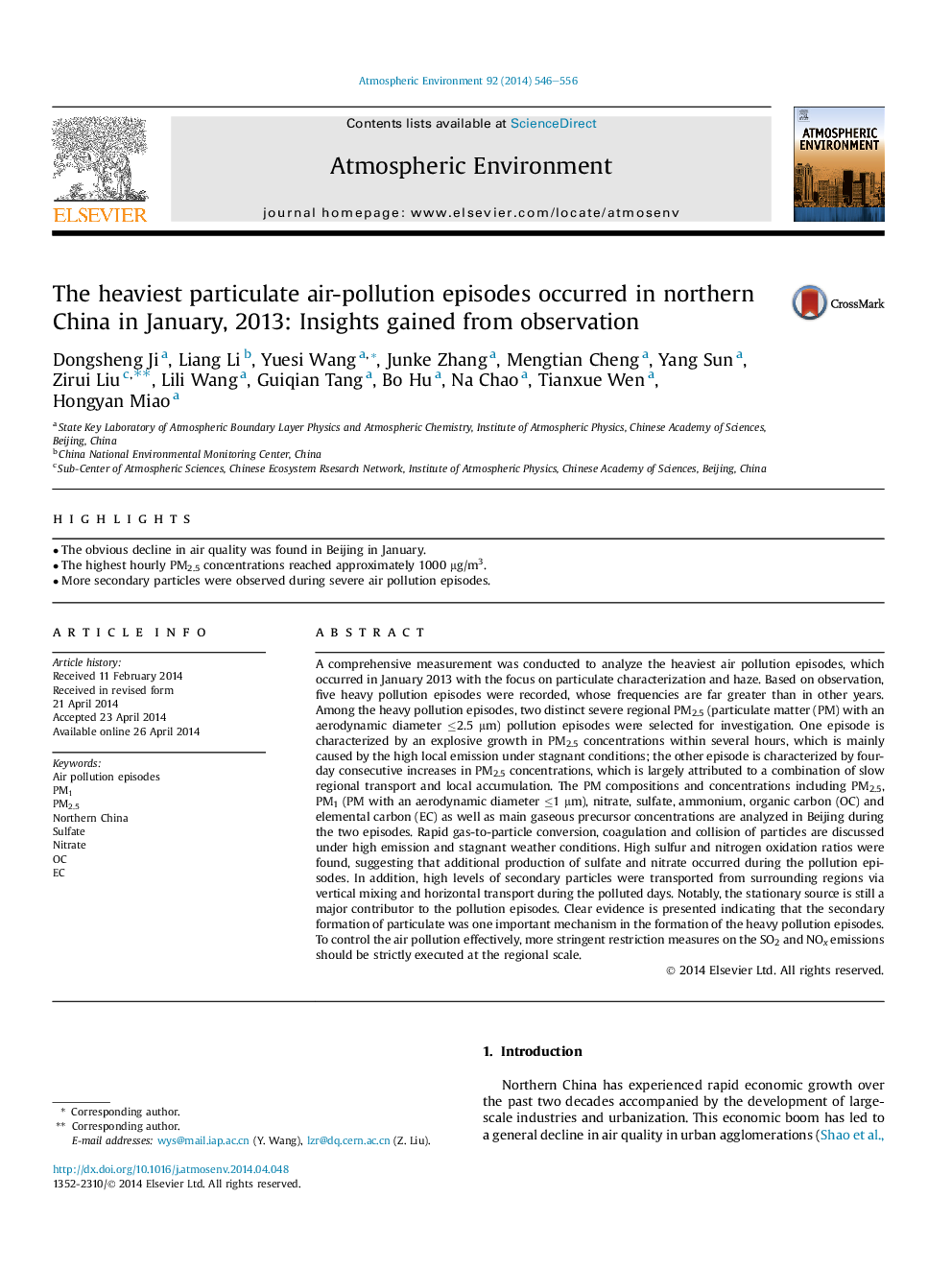| کد مقاله | کد نشریه | سال انتشار | مقاله انگلیسی | نسخه تمام متن |
|---|---|---|---|---|
| 6339430 | 1620379 | 2014 | 11 صفحه PDF | دانلود رایگان |
عنوان انگلیسی مقاله ISI
The heaviest particulate air-pollution episodes occurred in northern China in January, 2013: Insights gained from observation
ترجمه فارسی عنوان
در ژانویه سال 2013، در شمال چین، سنگین ترین قسمت های آلودگی ذرات رخ داده است: اطلاعاتی که از مشاهدات به دست آمده است
دانلود مقاله + سفارش ترجمه
دانلود مقاله ISI انگلیسی
رایگان برای ایرانیان
کلمات کلیدی
موضوعات مرتبط
مهندسی و علوم پایه
علوم زمین و سیارات
علم هواشناسی
چکیده انگلیسی
A comprehensive measurement was conducted to analyze the heaviest air pollution episodes, which occurred in January 2013 with the focus on particulate characterization and haze. Based on observation, five heavy pollution episodes were recorded, whose frequencies are far greater than in other years. Among the heavy pollution episodes, two distinct severe regional PM2.5 (particulate matter (PM) with an aerodynamic diameter â¤2.5 μm) pollution episodes were selected for investigation. One episode is characterized by an explosive growth in PM2.5 concentrations within several hours, which is mainly caused by the high local emission under stagnant conditions; the other episode is characterized by four-day consecutive increases in PM2.5 concentrations, which is largely attributed to a combination of slow regional transport and local accumulation. The PM compositions and concentrations including PM2.5, PM1 (PM with an aerodynamic diameter â¤1 μm), nitrate, sulfate, ammonium, organic carbon (OC) and elemental carbon (EC) as well as main gaseous precursor concentrations are analyzed in Beijing during the two episodes. Rapid gas-to-particle conversion, coagulation and collision of particles are discussed under high emission and stagnant weather conditions. High sulfur and nitrogen oxidation ratios were found, suggesting that additional production of sulfate and nitrate occurred during the pollution episodes. In addition, high levels of secondary particles were transported from surrounding regions via vertical mixing and horizontal transport during the polluted days. Notably, the stationary source is still a major contributor to the pollution episodes. Clear evidence is presented indicating that the secondary formation of particulate was one important mechanism in the formation of the heavy pollution episodes. To control the air pollution effectively, more stringent restriction measures on the SO2 and NOx emissions should be strictly executed at the regional scale.
ناشر
Database: Elsevier - ScienceDirect (ساینس دایرکت)
Journal: Atmospheric Environment - Volume 92, August 2014, Pages 546-556
Journal: Atmospheric Environment - Volume 92, August 2014, Pages 546-556
نویسندگان
Dongsheng Ji, Liang Li, Yuesi Wang, Junke Zhang, Mengtian Cheng, Yang Sun, Zirui Liu, Lili Wang, Guiqian Tang, Bo Hu, Na Chao, Tianxue Wen, Hongyan Miao,
